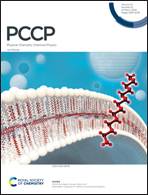Thermal transport properties of monolayer MoSe2 with defects
Abstract
Two-dimensional (2D) molybdenum diselenide (MoSe2) as one of the ultrathin transition metal dichalcogenides (TMDs) has attracted considerable attention because of its potential applications in thermoelectric and nano-electronic devices. Here, the thermal conductivity of monolayer MoSe2 and its responses to simulated size and defects are studied by nonequilibrium molecular dynamics simulations. With the increase of sample length, the thermal conductivity of monolayer MoSe2 nanoribbons exhibits an enhancement whereas it is insensitive to the width. At room temperature, the thermal conductivities of monolayer MoSe2 along armchair and zigzag directions are 17.758 and 18.932 W (m K)−1, respectively, which are consistent with previous results. The impact of defects on thermal conductivity has also been studied by varying the concentration of the vacancy from 0.1% to 0.5%. The results show that an increase of the defect concentration will greatly suppress the thermal conductivity. The 0.5% defect concentration with a Mo vacancy can result in a thermal conductivity reduction of ∼43%. Such a study would provide a good insight into the tunable thermal transport for potential applications of not only monolayer MoSe2, but also many other TMDs.



 Please wait while we load your content...
Please wait while we load your content...